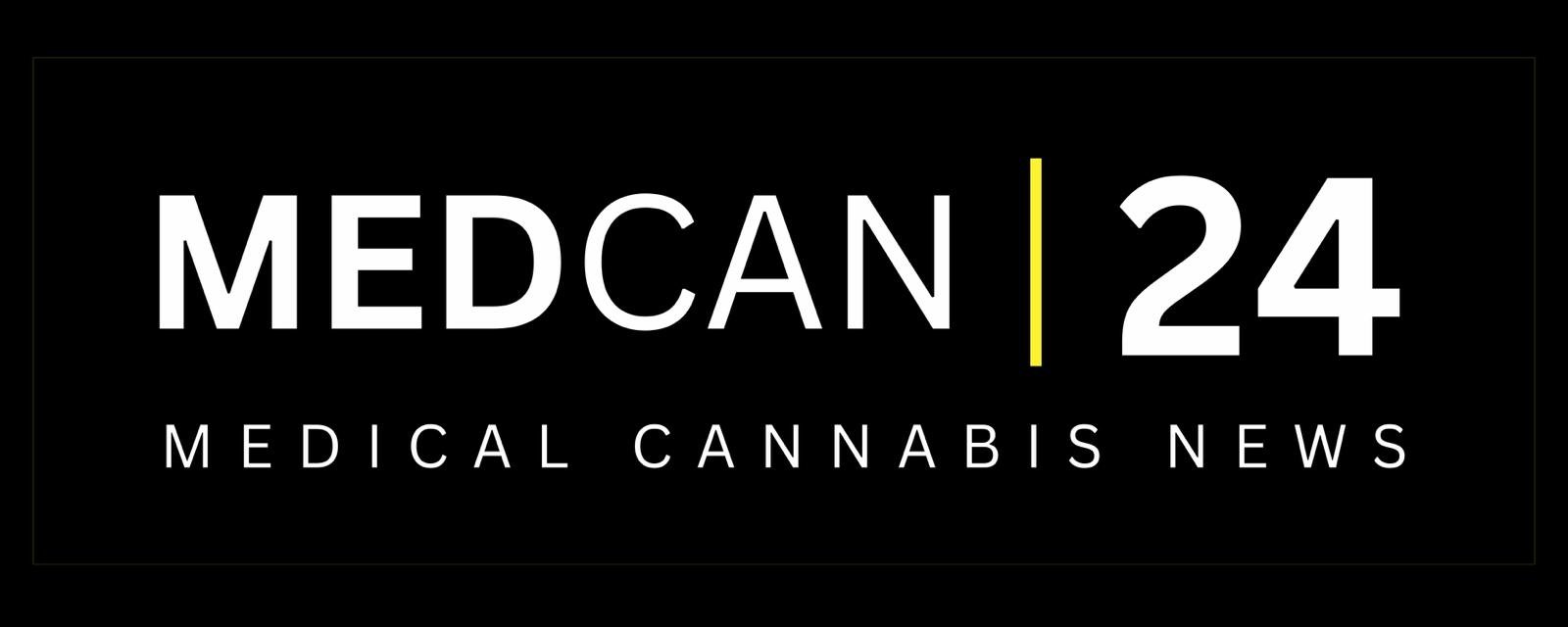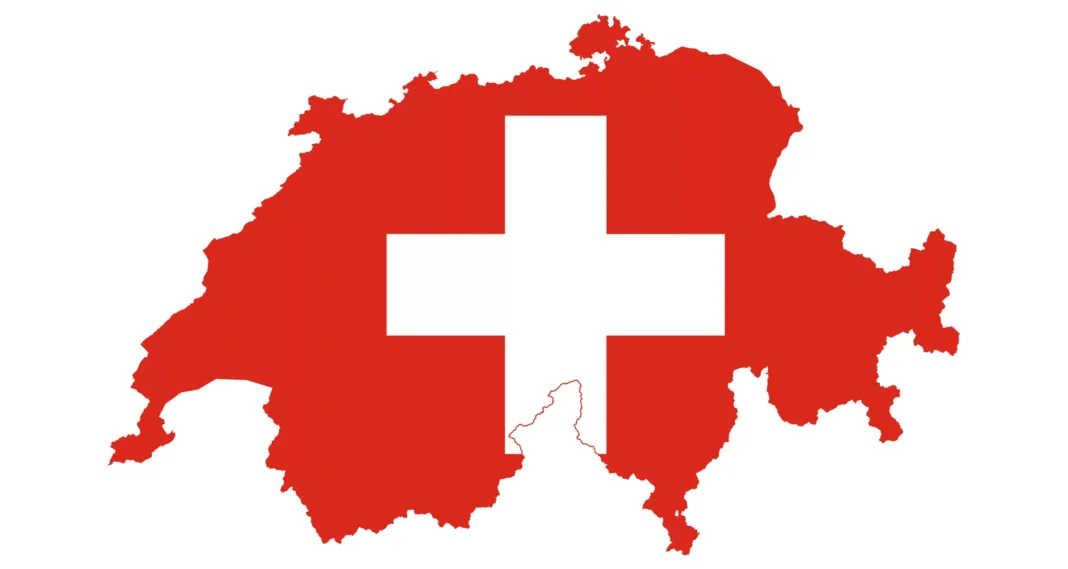Switzerland has now launched its three-month public consultation on its ambitious proposals to launch a fully regulated adult-use cannabis market, taking a decisive step towards becoming the first European country to do so.
While key policy aims have been in the public domain since February, when the Swiss Health Committee first passed preliminary draft legislation that would enable citizens to legally ‘grow, buy, possess and consume cannabis’, this represents the first time the full details and text of the bill have been available to the public.
With the public consultation phase officially starting on Friday, August 29, 2025, industry stakeholders, policy experts, medical professionals and the general public will have until December 01 to offer their input on the proposals before it makes its way through the Swiss parliament and into law.
Despite being one of the most forward-thinking and progressive cannabis reform projects in modern memory, proposals such as the establishment of a single, federally-supervised online retail channel, alongside the prohibition of vertical integration, could yet see significant pushback, making this phase all the more crucial.
What’s in Switzerland’s Federal Act on Cannabis Products (CanPG)?
The new draft of the Swiss ‘CanPG’ spans everything from how cannabis should be packed, to details on what time of day it can be sold, and how it will be taxed.
One core tenant of the bill, influencing policy proposals throughout the 200+ page document, is the focus on non-profit principles, prioritising harm reduction over commercial opportunity.
While this may be less than ideal for operators hoping to cash in on the newly reformed market, it places the its foundations in mechanisms which closely align with international law, effectively laying the groundwork with a solid justification for legalisation on the global stage.
Although Switzerland is not an EU member, its participation in the Schengen Zone means it must still respect the free movement of goods, a sticking point for other European states exploring adult-use cannabis reform. Building its framework squarely on the principle of harm reduction will work in Switzerland’s favour.
Below, we cover the key aspects and details of what CanPG proposes, and what Swiss citizens and business owners can expect, perhaps as early as next year.
Germany Looks To Placate Brussels As Its Cannabis Plans Teeter
Read More »
January 24, 2023

Crafting cannabis policy to adhere to European and international regulations
Read More »
July 11, 2022

How Existing Global Drug Conventions Provide A Pathway To End Cannabis Prohibition
Read More »
March 24, 2022
A commercial, but non-profit cannabis market

- Cantons (Swiss states) will retain a significant level of control over the retail offering in their respective territory
- “The sale of cannabis products to consumers is permitted only on the basis of a cantonal concession.”
- “The cantons limit the number of concessions insofar as this is necessary to protect public health and safety.”
- The draft also clarifies that cantons may: Operate retail directly, delegate to a public entity, or grant concessions to private third parties, under conditions defined by the Federal Council
- A single national concession for online sales
- Online sales require a federal concession from the Federal Office of Public Health (BAG), which can inspect and suspend or revoke it for breaches. Quote (EN)
- “The BAG supervises whether the online concessionaire complies… [and] may suspend, restrict or revoke the concession.”
- Vertical integration is banned
- Growers and manufacturers cannot own or participate in retail or the online channel, and retailers cannot cultivate, manufacture or import.
- Sales cap of 5g total THC
- At the point of sale a system must enforce a per-purchase cap equivalent to 5 grams total THC.
“Per sale the purchase quantity with a total-THC content of five grams must not be exceeded.”
- At the point of sale a system must enforce a per-purchase cap equivalent to 5 grams total THC.
- National seed-to-sale tracking system to be established
- A federal Nachverfolgungssystem (tracking system) underpins levy calculation, recalls and market statistics; nationwide monitoring and regular evaluations are mandated.
- “Data for the levy are drawn from the tracking system… the BAG evaluates the law’s effects within five years, then regularly.”
- Import/export needs permits; exports only if lawful at destination and backed by the destination import permit; the customs service can seize, refuse, or order destruction.
- “Import, transit and export without authorisation are prohibited… BAZG may seize, refuse, or order disposal.”
- Shops may not sell between 22:00–06:00. The online channel faces the same curfew on deliveries.
- “A night sales ban… between 22:00 and 06:00.” / “A delivery ban applies between 22:00 and 06:00.”
- “The cantons may extend the duration of the night-time sales ban.”
- Sales only to adults with Swiss citizenship or a Swiss residence permit; short-stay L-permits are excluded. Mandatory ID and age verification online and in-store.
- Mandatory staff training and brief risk-reduction consultation
- Test purchases by authorities to enforce age checks and caps
- Consumption rooms permitted under strict rules and no alcohol consumption inside.
Before going any further, it’s worth stopping to cover the way the text seems to measure permitted amounts of cannabis, based on THC content instead of total weight.
For example, the draft determines that citizens will be allowed to possess up to 5g of cannabis product – referring specifically to ‘total THC content’ irrespective of form (whether that’s flower, extract or vape liquid)
While there are still questions surrounding how this will be calculated, the text states:
- “In public space, possession is allowed of cannabis products with a total-THC content of no more than five grams …”
- Per-pack limit is also expressed as total THC content: “Cannabis products must be packed in units with total-THC of at most five grams.”
- Labels must declare total THC in mg and % (making it easier to calculate the 5g THC limit): “Declaration … in particular the total-THC content in milligrams and percent …”
- The levy is also calculated on the weight of total THC contained: “The levy … is based on the weight of the total THC contained in the product.”
- For home-grow possession, the draft even gives equivalence examples in grams of THC per 100 g of product (to make calculation explicit): “100 g dried flower: 15 g THC … 100 g hash: 25 g THC … 100 g solvent-based extract: 75 g THC.”
The draft uses “Gesamt-THC” consistently but does not spell out the analytical formula. Instead, it empowers the Federal Council/authorities to set testing and lab methods by ordinance: “The Federal Council may declare analytical methods binding …”
What will citizens legally be able to possess?

- At home
- Adults may grow up to three female plants in flower at home, some parties are pushing this to be raised to five.
- “An adult may cultivate at most three female cannabis plants in the flowering phase.”
- At home, adults may possess self-supply products totalling up to 75g THC (with conversion factors for flower, fresh cannabis, hash, concentrates).
- “In the private sphere… possession of self-supply products with at most 75 grams THC is permitted.”
- In public
- Adults may carry cannabis products containing up to 5 g total THC, or limited amounts of self-supply products (e.g., 30 g dried flower or 15 g hash).
- “In public space, possession is allowed of cannabis products with total-THC up to five grams, or… 30 g dried cannabis or 15 g hash.”
- Cannabis clubs
- A minority proposes licensing non-profit associations for member-only cultivation, capped membership and plant limits, under cantonal concession.
- “The draft is supplemented to allow association-based cultivation… non-profit, limited members… licensed at cantonal level.”
Products, quality, packaging and marketing

- Product categories
- Detailed requirements per form (smoking, vaping, oral, buccal, dermal, snuff).
- The Federal Council can add ‘novel’ categories and set technical standards; emissions caps for pre-rolls; device and container safety for vapes; dosing devices for oral forms.
- “The Federal Council may classify novel cannabis products… and prescribe technical safety standards.”
- Products with additives face pre-market notification to BAG via the tobacco product IT system; nicotine, alcohol, caffeine and other psychoactives are prohibited.
- “Certificate that the product contains no nicotine, alcohol, caffeine, and apart from THC, no psychoactive substances.”
- Standardised packaging
- Mandatory neutral, standardised packaging without brand elements; units must be packed so each pack contains no more than 5 g total THC; strong warning labels including pictorials for smoking products.
- “Cannabis products must be in sealed, neutral standardised packages without brand elements… in units with a total-THC content of at most five grams.”
- Advertising banned entirely
- A comprehensive ban on advertising, promotion and sponsorship; BAG polices the internet.
“All forms of advertising… are prohibited… BAG monitors compliance on the internet.”
- A comprehensive ban on advertising, promotion and sponsorship; BAG polices the internet.
Will cannabis products be taxed?
-
A two-part health steering levy applies to retail sales: one component on THC content, one on use-specific health risk by product type; rates can be raised if public-health targets are missed or lowered if the illicit market expands.
-
“The levy consists of a charge on THC content and a charge on the use-specific health risk… [rates] increased if targets are not met… lowered if the illegal market expands.”
-
Retailers and online concessionaires will pay the levy, which is collected by the Federal Office for Customer and Border Security using data from the tracking system.
-
“Levy-liable are concessionaires of retail outlets and the online channel… BAZG collects the levy… data from the tracking system.”
-
-
Public health targets will determine the levy rates
-
Quantified targets steer the levy and aim to reduce share of smoked products and increase the share of low-THC, no-additive products; prevent per-capita THC sold from rising over a baseline.
-
“Ten years after entry into force… smoked products less than 20%… low-THC products at least 50%… per-capita total-THC sold not to increase.”
-
A minority proposes replacing the levy with a tobacco-style excise tax.
-
“The draft is amended such that sales are subject to a tax analogous to tobacco instead of a steering levy.”
-
-
Online profits must be spent on prevention, harm reduction and addiction services
-
“Profits above the adequate return… are used for prevention, harm reduction and addiction support… audited annually.”
-

‘GMP Is the Foundation of Trust in Our Industry’ – Inside Linnea’s Take on Pharma-Grade Cannabinoids
Read More »
August 14, 2025

Switzerland Presents Draft Law to Regulate Cannabis
Read More »
July 29, 2025

Cronos Grows its International Footprint in Switzerland
Read More »
July 7, 2025
The post Inside Switzerland’s Cannabis Legalisation Plans appeared first on MEDCAN24.
Switzerland has now launched its three-month public consultation on its ambitious proposals to launch a fully regulated adult-use cannabis market, taking a decisive step towards becoming the first European country to do so.
While key policy aims have been in the public domain since February, when the Swiss Health Committee first passed preliminary draft legislation that would enable citizens to legally ‘grow, buy, possess and consume cannabis’, this represents the first time the full details and text of the bill have been available to the public.
With the public consultation phase officially starting on Friday, August 29, 2025, industry stakeholders, policy experts, medical professionals and the general public will have until December 01 to offer their input on the proposals before it makes its way through the Swiss parliament and into law.
Despite being one of the most forward-thinking and progressive cannabis reform projects in modern memory, proposals such as the establishment of a single, federally-supervised online retail channel, alongside the prohibition of vertical integration, could yet see significant pushback, making this phase all the more crucial.
What’s in Switzerland’s Federal Act on Cannabis Products (CanPG)?
The new draft of the Swiss ‘CanPG’ spans everything from how cannabis should be packed, to details on what time of day it can be sold, and how it will be taxed.
One core tenant of the bill, influencing policy proposals throughout the 200+ page document, is the focus on non-profit principles, prioritising harm reduction over commercial opportunity.
While this may be less than ideal for operators hoping to cash in on the newly reformed market, it places the its foundations in mechanisms which closely align with international law, effectively laying the groundwork with a solid justification for legalisation on the global stage.
Although Switzerland is not an EU member, its participation in the Schengen Zone means it must still respect the free movement of goods, a sticking point for other European states exploring adult-use cannabis reform. Building its framework squarely on the principle of harm reduction will work in Switzerland’s favour.
Below, we cover the key aspects and details of what CanPG proposes, and what Swiss citizens and business owners can expect, perhaps as early as next year.

Germany Looks To Placate Brussels As Its Cannabis Plans Teeter
Read More »
January 24, 2023

Crafting cannabis policy to adhere to European and international regulations
Read More »
July 11, 2022

How Existing Global Drug Conventions Provide A Pathway To End Cannabis Prohibition
Read More »
March 24, 2022
A commercial, but non-profit cannabis market

- Cantons (Swiss states) will retain a significant level of control over the retail offering in their respective territory
- “The sale of cannabis products to consumers is permitted only on the basis of a cantonal concession.”
- “The cantons limit the number of concessions insofar as this is necessary to protect public health and safety.”
- The draft also clarifies that cantons may: Operate retail directly, delegate to a public entity, or grant concessions to private third parties, under conditions defined by the Federal Council
- A single national concession for online sales
- Online sales require a federal concession from the Federal Office of Public Health (BAG), which can inspect and suspend or revoke it for breaches. Quote (EN)
- “The BAG supervises whether the online concessionaire complies… [and] may suspend, restrict or revoke the concession.”
- Vertical integration is banned
- Growers and manufacturers cannot own or participate in retail or the online channel, and retailers cannot cultivate, manufacture or import.
- Sales cap of 5g total THC
- At the point of sale a system must enforce a per-purchase cap equivalent to 5 grams total THC.
“Per sale the purchase quantity with a total-THC content of five grams must not be exceeded.”
- At the point of sale a system must enforce a per-purchase cap equivalent to 5 grams total THC.
- National seed-to-sale tracking system to be established
- A federal Nachverfolgungssystem (tracking system) underpins levy calculation, recalls and market statistics; nationwide monitoring and regular evaluations are mandated.
- “Data for the levy are drawn from the tracking system… the BAG evaluates the law’s effects within five years, then regularly.”
- Import/export needs permits; exports only if lawful at destination and backed by the destination import permit; the customs service can seize, refuse, or order destruction.
- “Import, transit and export without authorisation are prohibited… BAZG may seize, refuse, or order disposal.”
- Shops may not sell between 22:00–06:00. The online channel faces the same curfew on deliveries.
- “A night sales ban… between 22:00 and 06:00.” / “A delivery ban applies between 22:00 and 06:00.”
- “The cantons may extend the duration of the night-time sales ban.”
- Sales only to adults with Swiss citizenship or a Swiss residence permit; short-stay L-permits are excluded. Mandatory ID and age verification online and in-store.
- Mandatory staff training and brief risk-reduction consultation
- Test purchases by authorities to enforce age checks and caps
- Consumption rooms permitted under strict rules and no alcohol consumption inside.
Before going any further, it’s worth stopping to cover the way the text seems to measure permitted amounts of cannabis, based on THC content instead of total weight.
For example, the draft determines that citizens will be allowed to possess up to 5g of cannabis product – referring specifically to ‘total THC content’ irrespective of form (whether that’s flower, extract or vape liquid)
While there are still questions surrounding how this will be calculated, the text states:
- “In public space, possession is allowed of cannabis products with a total-THC content of no more than five grams …”
- Per-pack limit is also expressed as total THC content: “Cannabis products must be packed in units with total-THC of at most five grams.”
- Labels must declare total THC in mg and % (making it easier to calculate the 5g THC limit): “Declaration … in particular the total-THC content in milligrams and percent …”
- The levy is also calculated on the weight of total THC contained: “The levy … is based on the weight of the total THC contained in the product.”
- For home-grow possession, the draft even gives equivalence examples in grams of THC per 100 g of product (to make calculation explicit): “100 g dried flower: 15 g THC … 100 g hash: 25 g THC … 100 g solvent-based extract: 75 g THC.”
The draft uses “Gesamt-THC” consistently but does not spell out the analytical formula. Instead, it empowers the Federal Council/authorities to set testing and lab methods by ordinance: “The Federal Council may declare analytical methods binding …”
What will citizens legally be able to possess?

- At home
- Adults may grow up to three female plants in flower at home, some parties are pushing this to be raised to five.
- “An adult may cultivate at most three female cannabis plants in the flowering phase.”
- At home, adults may possess self-supply products totalling up to 75g THC (with conversion factors for flower, fresh cannabis, hash, concentrates).
- “In the private sphere… possession of self-supply products with at most 75 grams THC is permitted.”
- In public
- Adults may carry cannabis products containing up to 5 g total THC, or limited amounts of self-supply products (e.g., 30 g dried flower or 15 g hash).
- “In public space, possession is allowed of cannabis products with total-THC up to five grams, or… 30 g dried cannabis or 15 g hash.”
- Cannabis clubs
- A minority proposes licensing non-profit associations for member-only cultivation, capped membership and plant limits, under cantonal concession.
- “The draft is supplemented to allow association-based cultivation… non-profit, limited members… licensed at cantonal level.”
Products, quality, packaging and marketing

- Product categories
- Detailed requirements per form (smoking, vaping, oral, buccal, dermal, snuff).
- The Federal Council can add ‘novel’ categories and set technical standards; emissions caps for pre-rolls; device and container safety for vapes; dosing devices for oral forms.
- “The Federal Council may classify novel cannabis products… and prescribe technical safety standards.”
- Products with additives face pre-market notification to BAG via the tobacco product IT system; nicotine, alcohol, caffeine and other psychoactives are prohibited.
- “Certificate that the product contains no nicotine, alcohol, caffeine, and apart from THC, no psychoactive substances.”
- Standardised packaging
- Mandatory neutral, standardised packaging without brand elements; units must be packed so each pack contains no more than 5 g total THC; strong warning labels including pictorials for smoking products.
- “Cannabis products must be in sealed, neutral standardised packages without brand elements… in units with a total-THC content of at most five grams.”
- Advertising banned entirely
- A comprehensive ban on advertising, promotion and sponsorship; BAG polices the internet.
“All forms of advertising… are prohibited… BAG monitors compliance on the internet.”
- A comprehensive ban on advertising, promotion and sponsorship; BAG polices the internet.
Will cannabis products be taxed?
-
A two-part health steering levy applies to retail sales: one component on THC content, one on use-specific health risk by product type; rates can be raised if public-health targets are missed or lowered if the illicit market expands.
-
“The levy consists of a charge on THC content and a charge on the use-specific health risk… [rates] increased if targets are not met… lowered if the illegal market expands.”
-
Retailers and online concessionaires will pay the levy, which is collected by the Federal Office for Customer and Border Security using data from the tracking system.
-
“Levy-liable are concessionaires of retail outlets and the online channel… BAZG collects the levy… data from the tracking system.”
-
-
Public health targets will determine the levy rates
-
Quantified targets steer the levy and aim to reduce share of smoked products and increase the share of low-THC, no-additive products; prevent per-capita THC sold from rising over a baseline.
-
“Ten years after entry into force… smoked products less than 20%… low-THC products at least 50%… per-capita total-THC sold not to increase.”
-
A minority proposes replacing the levy with a tobacco-style excise tax.
-
“The draft is amended such that sales are subject to a tax analogous to tobacco instead of a steering levy.”
-
-
Online profits must be spent on prevention, harm reduction and addiction services
-
“Profits above the adequate return… are used for prevention, harm reduction and addiction support… audited annually.”
-

‘GMP Is the Foundation of Trust in Our Industry’ – Inside Linnea’s Take on Pharma-Grade Cannabinoids
Read More »
August 14, 2025

Switzerland Presents Draft Law to Regulate Cannabis
Read More »
July 29, 2025

Cronos Grows its International Footprint in Switzerland
Read More »
July 7, 2025
The post Inside Switzerland’s Cannabis Legalisation Plans appeared first on MEDCAN24.
Cannabis Law Resources in Poland
Explore essential legal pages about cannabis cultivation, sales, and medical product regulations in Poland. These resources will guide you through permissions, certifications, and compliance requirements.
-
Polish News Registration and Interests of Cannabis Businesses
-
Permissions for Cannabis Sales in Poland
-
Authorization for Importing or Manufacturing Medical Products
-
Permission for Manufacturing or Importing Medical Products
-
Certificate of Good Manufacturing Practices (GMP)
-
Registration of Medical Products in Poland




